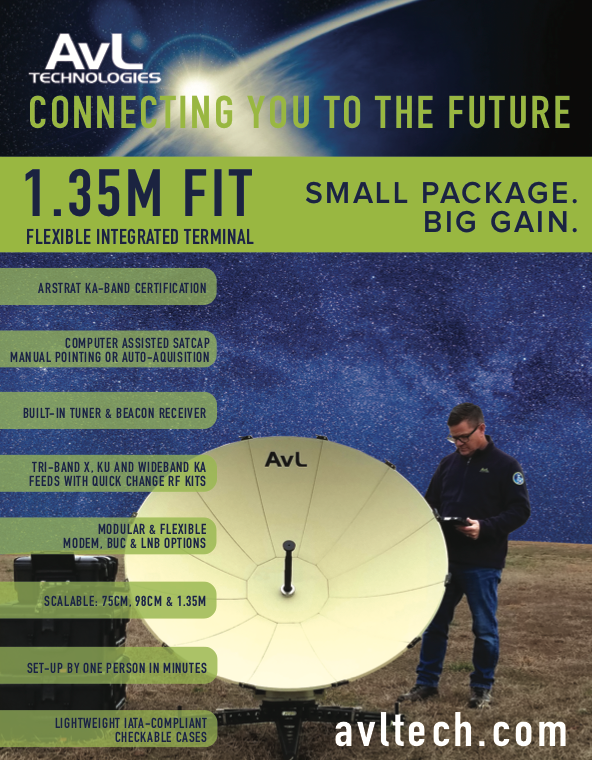The planet’s two richest individuals, Elon Musk and Jeff Bezos, are involved in a bitter slanging match over their satellite broadband mega-constellations.
Elon Musk and Jeff Bezos and their two rival businesses, SpaceX and Project Kuiper, have lodged almost daily tit-for-tat filings with the Federal Communications Commission (FCC), with SpaceX saying that Amazon’s Kuiper is guilty of “stifling competition.”

On February 4, Amazon’s satellite internet project clarified its position in response to recent accusations from Elon Musk and SpaceX that Jeff Bezos’ company is attempting to stifle competition in the sector. Amazon argues – perhaps cheekily — that the FCC should consider Starlink as a “newly designed system” and include it in a broader regulatory processing round that was opened when SpaceX submitted a modification request last year.
In other words, SpaceX/Starlink should, perhaps, start from scratch. Amazon argued that while it supported the ability of operators to modify their systems, what Starlink was requesting was too significant.
SpaceX is already asking the FCC to reduce the heights of some of its Starlink satellites. Project Kuiper stated that if the FCC agrees to the request, then the new orbits will interfere with Kuiper’s plans.
The actual heights are crucial. Musk’s SpaceX request is to orbit 3,000 satellites at heights between 540 to 570 kms (and could wind up in orbits 30 km above or below their licensed orbits). However, Project Kuiper’s existing plan is to orbit its fleet at about 590 kms. Kuiper is arguing that at these close distances, there is a risk of collision and that Musk’s Starlink’s will interfere with Kuiper’s transmissions.
SpaceX brushed off these concerns in the company’s January 22 letter to the FCC from David Goldman (Director Of Satellite Policy at SpaceX) arguing that Project Kuiper had “cherry-picked” its data and was ignoring the modifications SpaceX is proposing in its request for permission. The letter detailed three telephone conversations that SpaceX officials had held with FCC staffers.
Elon Musk also Tweeted on January 26 saying, “It does not serve the public to hamstring Starlink today for an Amazon satellite system that is at best several years away from operation.”
Hours later, Amazon bounced back with its response — “The facts are simple. We designed the Kuiper System to avoid interference with Starlink, and now SpaceX wants to change the design of its system.”
Bezos’s team added, “Those changes not only create a more dangerous environment for collisions in space, but they also increase radio interference for customers. Despite what SpaceX posts on Twitter, it is SpaceX’s proposed changes that would hamstring competition among satellite systems. It is clearly in SpaceX’s interest to smother competition in the cradle if they can, but it is certainly not in the public’s interest.”
SpaceX insists that the modifications it is carrying out would not cause significant increased interference. SpaceX says that its competitors (which also include Viasat) “misrepresent the true results of the modification.”
SpaceX also threw in one major claim. “Amazon lacks standing because its system is not authorized to launch.” These is not quite correct in that Kuiper is authorized by the FCC (July 30, 2020), although the Commission requires that SpaceX deploys at least half of its planned fleet (some 1600 craft) by July of 2026.
The FCC, on July 30 last year, stated that the Kuiper system would advance the public interest… and increase the availability of high-speed broadband service to consumers, government and business.
SpaceX in its filing to the FCC stressed the upside benefits of today’s 100 Mb/s downlink and growing to 10 Gb/s (future) download speeds. The company reminded the FCC that it remains committed to launching about 120 satellites per month and that the constellation is the “lowest LEO system with autonomous collision avoidance.”
SpaceX also repeated a previous commitment that once Kuiper reached its Phase IV (>1800 satellites), it would not operate at more than 580 kms.
Just before the Christmas holiday season last yeaer, Amazon’s SVP of Devices and Services, David Limp, speaking at the Tech Crunch Space 2020 event, told delegates that Kuiper was “launch agnostic” and joked that if there was anyone out there with a spare rocket then to give him a call!
“One of the reasons we thought the time was right to do a constellation now is because of some of the dynamics happening in the launch industry. Every day, we see a new demonstration of reusability, every day we see new demonstrations of breakthroughs in better engines, whether that’s Raptor [which is SpaceX’s engine] or BE-4 [Jeff Bezos’ Blue Origin],” he added.
Mr. Limp explained that Kuiper’s own plans did not depend wholly on the Blue Origin-based rockets. He said that Blue Origin would provide some launch capacity, but there would be other suppliers. “When you have to put 3,200-plus things into space, you will need lots of launch capacity,” he said. “Our hope is that it’s not just one provider, that there will be multiple providers.”
The clock is ticking… there are no satellites as of this writing, and while Kuiper has talked about its consumer terminals being able to manage transmission of up to 400 Mb/s — and more down the line — they have yet to be tested in ‘real space’ LEO environments although they have been tested on transmissions from geostationary craft.
Kuiper said, “[Our] single aperture phased array antenna that measures 12 inches in diameter, making it three times smaller and proportionately lighter than legacy antenna designs. This order of magnitude reduction in size will reduce production costs by an equal measure, allowing Amazon to offer customers a terminal that is more affordable and easier to install.”
Kuiper talks about the unit’s ability to handle 4K television streaming material.
Then Jeff Bezos stepped aside from his day-to-day management at Amazon. How much time this will give him to work with his Kuiper — and Blue Origin teams — is yet to be seen.
Meanwhile, SpaceX is well on its way to global coverage. Some 1,100 craft on-orbit, and being added to at a rate of two launches per month, thus 120 extra craft. By mid-year, there could easily be 1,500 satellites on-orbit… and probably more.
At the start of February, it was learned that Starlink’s broadband-by-satellite service is now supplying capacity to more than 10,000 beta-users. The news emerged in a filing to the FCC. Moreover, SpaceX says that it has registered “hundreds of thousands” of interested users without a dollar being spent in advertising. SpaceX says that demand for its service is “strong and widespread.”
The FCC filing stated that Starlink’s performance levels were meeting and exceeding 100 Mb/s down and 20 Mb/s up, with 95 percent of the network managing round-trip latency at or below 31 milliseconds.
Starlink had also tested successfully voice services over the system and that voice connectivity would be available to users with charges “reasonably comparable to urban rates.” Emergency services – to 911 for the US – would also be available.
The SpaceX filing was in support of the company’s classification as an Eligible Telecommunications Carrier (ETC) and the Rural Digital Opportunities Fund. Starlink is looking for the FCC to grant permission by June 7. SpaceX has qualified for $885 million in Federal funding for a 10-year period and serving 35 US states.
SpaceX reminded the FCC that Starlink already has the authorizations necessary to offer consumer mass-market service. SpaceX told an Australian parliamentary committee that much of Australia will be covered by the Starlink fleet in “early 2021” and the Australian outlying islands by the end of 2022. “Certain more proximate islands within the external territories, notably the Ashmore, Cartier, and Coral Sea Islands, could be served by early 2022, when SpaceX has more fully populated its satellite constellation with ongoing launches and with the establishment of gateway earth stations at proximate mainland locations.”
Other countries have also licensed Starlink services, although it is worth remembering that the FCC has only licensed Starlink in the United States for an initial one million user terminals. Other jurisdictions have granted approval, including the UK, Greece, Canada, Germany, Australia and elsewhere, and with an application pending in India.
The fact that both Musk and Bezos can easily finance their rival businesses helps that the systems will launch and provide competition for consumers. However, it is by no means certain that Musk’s ‘first mover advantage’ will prove to be the winning formula. After all, Amazon has a global relationship with millions — and probably billions — of users. Then there’s OneWeb and the promised Telesat schemes just to throw further competition into the mix.
These highly competitive marketing and sales elements might turn out to be crucially important in certain countries (Telesat in Canada, OneWeb in India, for example).
Meanwhile, the two billionaires are ensuring us humble mortals remain extremely amused!

Senior Columnist Chris Forrester is a well-known broadcasting journalist and industry consultant. He reports on all aspects of broadcasting with special emphasis on content, the business of television and emerging applications. He founded Rapid TV News and has edited Interspace and its successor Inside Satellite TV since 1996. He also files for Advanced-Television.com. In November of 1998, Chris was appointed an Associate (professor) of the prestigious Adham Center for Television Journalism, part of the American University in Cairo (AUC), in recognition of his extensive coverage of the Arab media market. Chris is a Senior Contributor for Satnews Publishers.


